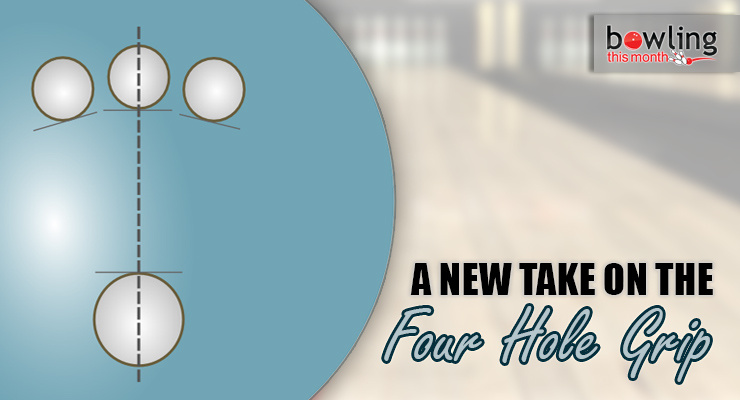Article Contents
- 1. Three hole (two finger) drillings
- 2. Four hole (three finger) drillings – present method
- 3. Four hole (three finger) drillings – new method
- 4. Hand pad pressure points
- 5. Closing remarks
Note: This article is only available to Bowling This Month subscribers.
Thinking of leaving the game due to grip problems? Don’t do it…help is on the way!
Is your bowling ball starting to feel a little heavy? Is your ball speed getting slower and slower? Does the effort required to hold onto the ball, to get it down the lane, seem like a great deal of work? Perhaps you are even thinking of lowering your ball weight?
Maybe the ball weight is not the problem, but perhaps you would love to increase your ball speed. Or, perhaps you’re a “twister” (a high revver with a lot of axis tilt) with decent ball speed, but you have a very low track and would love to play a little straighter.
How can you do all of this? What if I told you we could change all of the above with one unique drilling change in your present arsenal?!
All of this is possible with one test drill…and you will not believe the difference it can make!
Bowlers who are having problems holding onto the ball usually change pitches, shorten spans, and reduce ball weight. I’m talking about making a change in your drilling that will naturally permit you to increase your span, keep your present ball weight, increase your ball speed, and raise your ball track!
Not all hands are built the same, and most of you ball drillers out there know that. Some bowlers have natural hand strength, while many others do not. Our job as ball drillers is to design a fit for the unique hand in front of us. This will permit the bowler to allow the ball to swing the arm at dead weight speed, in an effortless manner. This can be achieved without the need to squeeze the ball.
For many years, the very best coaches and ball drillers have known that the left side (for righthanders) is the weak side of the hand. In fact, many wrist supports and gloves have been designed to alleviate this very problem.
In the past, when the gloves, wrist supports, pitches, and/or span reductions did not work, a third hole was added for the baby finger. This worked for some, but mostly it was a hit and miss proposition. The pitches drilled for this baby finger had to be extreme and, as a result, a great deal of side pressure on this extra hole made it very uncomfortable for most hands.
This extra hole for the baby finger offset the weight balance in the hand, making it very apparent that the swinging of the ball weight ...
Already a premium member? Click here to log in.


